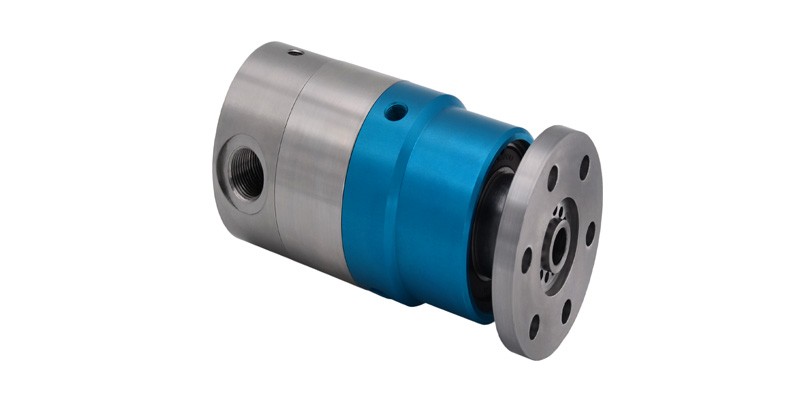This article provides a comprehensive overview of Pneumatic Rotary Unions – invaluable components used in numerous industries. From understanding the concept to covering its uses and future trends, let’s delve into the intricate details of the Pneumatic Rotary Union.
Introduction to Pneumatic Rotary Union
Pneumatic rotary unions, also named rotary joints, are innovative mechanical devices specifically designed to transfer pressurized fluid or gas from a stationary source into a rotating piece of machinery. In essence, these unions act as a bridge creating a secure, sealed connection between static and dynamic equipment parts. They ensure that the transferred media – in this case, air or other gases – retain their pressure, temperature, and flow levels, which are essential for the machinery’s performance.
The primary purpose of these pneumatic rotary unions is to facilitate a smooth and constant flow of fluid or gas while the equipment is in motion. They are used in almost every manufacturing process where rotating machinery parts need a steady supply of pressurized gas. This functionality makes them a significant player in maintaining the industrial operations’ efficiency and effectiveness.
Over the past few years, the demand for pneumatic rotary unions has seen an exponential upswing. This growth is largely due to their crucial role across various sectors, including aerospace, automotive, printing, and packaging, to name a few. For instance, in the automotive industry, pneumatic rotary unions are often utilized in paint robots, offering consequential assistance in the painting process.
Furthermore, their use also extends to the renewable energy sector, particularly in wind turbines where they act as a medium for transferring pressurized air into the rotating blades. As newer industries recognize the potential of these devices and incorporate their use into their processes, the demand for pneumatic rotary unions seems poised to grow significantly. Thus, understanding the working, types, applications, and maintenance requirements of pneumatic rotary unions is more relevant than ever in our increasingly mechanized world.
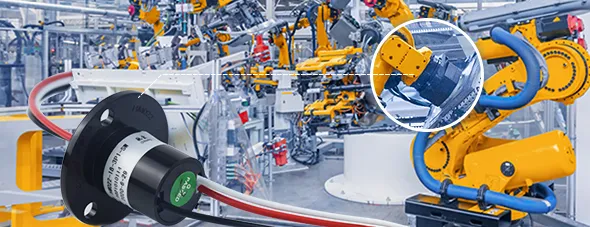
Basic Principles of Pneumatic Rotary Union
Pneumatic rotary unions are primarily used to maintain a steady, uninterrupted flow of pressurized air or gas from stationary to rotating parts in a mechanical system. The underlying concept shaping the functionality of these unions is quite straightforward yet remarkable in the world of engineering.
The functionality of a pneumatic rotary union hinges on its ability to form a sealed connection between a fixed input (such as a supply pipe) and a rotating output (such as a drum or a roll). This central concept allows the moving and static parts of a machinery system to lead an interconnected operation, creating a reliable flow path for gases at controlled pressures and temperatures.
The core working mechanism of a pneumatic rotary union incorporates strategically placed seals and bearings. The seal’s design and material are crucial as they prevent leakages, retaining the pressurized gas within the system. This seal exists between the stationary inlet and the rotating outlet, thus facilitating fluid or gas transmission even when the machinery is in motion. The bearings, on the other hand, are integral to supporting the rotating components and reducing friction between moving parts. This synchronization of components achieves the primary task of a constant, seamless gas supply.
A pneumatic rotary union plays a vital role in the transfer of gases between stationary and rotating machinery parts. It ensures the gas’s safe transition while maintaining its pressure and temperature, critical for the machinery’s performance. Considering the diversity of industrial applications, some rotary unions are designed to handle different gases simultaneously. This function is particularly valuable in complex operations where different gases are required to maintain the machinery’s operational efficiency.
Overall, the core principles of a pneumatic rotary union lie in the interplay of its fundamental components in creating a reliable linkage between static and rotating machinery parts. The union’s comprehensive design factors in pressure, temperature, and flow rate, thereby maintaining a seamlessly regulated gas supply and contributing to the success of diverse industrial operations.
Types of Pneumatic Rotary Unions
Pneumatic rotary unions, given their vast utilization across different industries, come in various types, each engineered to suit particular operational needs. This type of diversity largely depends on the number of passages and the specific industry they cater to.
Two primary variants of pneumatic rotary unions are the single passage and the multiple passage rotary unions. To understand their properties, it’s essential to clarify that ‘passage’ in this context refers to the path through which the pressurized air or gas is transferred.
Single Passage Rotary Unions
As the name suggests, single-passage rotary unions consist of a single path for the flow of gas or fluid. They’re typically utilized in simple machinery with minimal need for varied or simultaneous transmission of gases. Single passage unions are commonly found in a broad array of industries but are significantly useful in production machinery, particularly in rotary tables, winders, and cable reels.
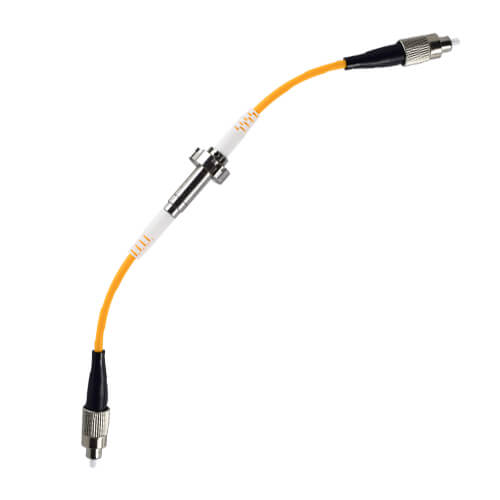
Multiple Passage Rotary Unions
Multiple passage rotary unions, conversely, possess more than a single path for fluid or gas transmission, making them ideal for more complex machinery. Each passage can be designed to handle a different media type or adhere to different flow rates, pressures, and temperatures. This ability enables them to supply multiple fluids and/or gases simultaneously to the same rotating component. Thus, multiple passage rotary unions find their application in more complex systems such as aerospace equipment, automation processes, and multi-substrate industrial printers.
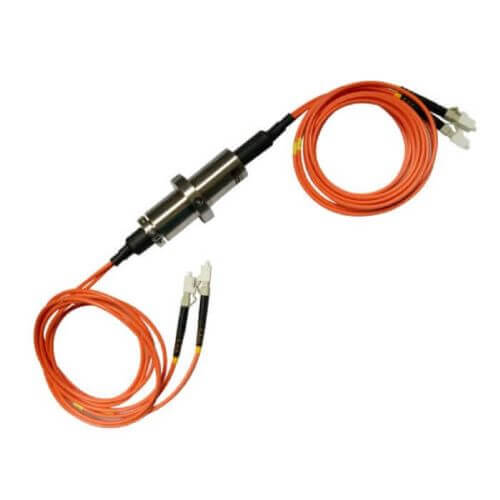
While these two variants constitute the prime categories of pneumatic rotary unions, they are by no means the only ones. Other specialized types of unions have also been engineered to cater to niche requirements. For instance, high-speed rotary unions for fast-rotating machinery and high-pressure rotary unions for systems operating under high-pressure conditions.
The selection among these types fundamentally depends on the specific requirements of an operation. Grasping the differences between these types and understanding their respective functionalities is fundamental to achieving optimal performance and longevity from a pneumatic rotary union.
Key Components of Pneumatic Rotary Unions
Three essential components are at the heart of every pneumatic rotary union: seals, bearings, and housing. Although subtle at first glance, these constituents play a substantial role in the overall functionality and efficiency of the union, ensuring the steady, reliable transmission of gases.
Seals
Seals are arguably the most critical part of a pneumatic rotary union. They act as a barrier, preventing the leakage of pressurized air or gas while allowing the rotating part to move freely. In this way, seals ensure that the media retains its pressure, temperature, and flow rate, thereby maintaining the machinery’s performance.
The design, material, and wear resistance of the seals are integral to the longevity and efficiency of the rotary unions. Seals need to be engineered from robust materials able to withstand the pressure of the transmitted gases, as well as resist the wear and tear from constant interaction with the rotating parts.
Bearings
Bearings are another pivotal component in pneumatic rotary unions. They support the rotating components and allow precise rotation by reducing friction between the moving parts. This reduction of friction is crucial to prevent unnecessary wear and tear, and overheating, and to ensure the smooth operation of the rotary union.
Depending on the application, different types of bearings may be used. For instance, roller bearings might be used in high-load applications while ball bearings might be used in low-load but high-speed applications.
Housing
Housing, the outer case of the rotary union, is responsible for providing the sturdy structure within which the other components operate. It protects the internal parts from external factors such as physical damage, dirt, or moisture while simultaneously ensuring a robust connection between the stationary and rotating components.
The material of the housing must be durable and able to withstand the environmental conditions in which the machine operates. The housing is frequently made of metal, such as stainless steel or aluminum, depending on corrosion resistance, weight, and structural stability requirements.
In aggregate, the harmony between seals, bearings, and housing defines the overall performance and reliability of a pneumatic rotary union. A clear understanding of their workings is vital for proper installation, maintenance, and troubleshooting of these mechanical marvels.
Selection Criteria for Pneumatic Rotary Unions
Choosing the right pneumatic rotary union is crucial to ensure the machinery operates at its peak efficiency. Selecting the appropriate union also translates into a longer lifespan and reduced downtime. It is essential to take some critical factors into account when selecting a pneumatic rotary union:
Pressure Range
The rotary union must be capable of withstanding the pressure range of the gas being transmitted. While different unions cater to different pressure ratings, it is crucial to choose one that aligns with the specific application’s pressure requirements. Inadequate pressure management can lead to seal failure, gas leakage, and reduced efficiency of the machinery.
Flow Capacity
Flow capacity, or the volume of gas that can pass through the rotary union within a given period, must also be considered. Selecting a union with the appropriate flow capacity will help ensure that the machinery receives the necessary gas supply for optimal performance. A mismatch in flow capacity could lead to insufficient supply or pressure buildup, both of which can impair the equipment’s functionality and performance.
Temperature Range
The ability to handle the temperature range of the transmitted gas is another essential aspect of rotary union selection. Each rotary union is designed to cope with a specific temperature range; thus, it is crucial to identify the one that matches the application’s operational temperatures. Overlooking this factor can expose the seals, bearings, and other internal components to excessive wear and potential failure.
Compatibility with Different Gases
A rotary union must be compatible with the type(s) of gas it will cater to, given that different gases exhibit varying characteristics. Material compatibility of seals and housing should be carefully evaluated to avoid premature wear and chemical reactions with gases being transmitted.
Application-Specific Factors
Some applications may require specialized features or adjustments. For example, high-speed rotary unions for fast-rotating machinery, or high-pressure rotary unions for applications with extreme pressure. In the case of multiple passage rotary unions, the application might necessitate the transmission of different gases with varying pressure and temperature requirements simultaneously.
Understanding the specific needs of an application and selecting a pneumatic rotary union that fulfills them contributes to the machinery’s longevity, optimal performance, and reduced maintenance cycles. Evaluating the pressure range, flow capacity, temperature range, compatibility with different gases, and application-specific requirements are essential factors that help make an informed decision when investing in a pneumatic rotary union.
Pneumatic Rotary Union Proper Installation and Maintenance
To optimize the performance and longevity of a pneumatic rotary union, it is crucial to install and maintain the union correctly. This involves adhering to a few guidelines and taking note of essential tips throughout its lifecycle.
Installation Guidelines:
- Equipment Prep: Before starting, ensure all necessary tools and materials are prepared, such as wrenches, lubricants, and sealants. Consult the manufacturer’s manual for specific recommendations.
- Clean the Interface: Always clean and inspect the mating surfaces to eliminate any debris, burrs, or contaminants, as these can compromise the seal quality.
- Align the Components: Proper alignment between the stationary and rotating components is vital to prevent excessive stress on the seals and bearings. Use appropriate tools to ensure accurate alignment.
- Lubricate: Before assembly, lightly lubricate all mating surfaces with the recommended lubricant. This will facilitate assembly and protect the assembly from damage due to friction.
- Proper Torque: If specified in the manual, adhere to the required torque values and tightening patterns while installing the pneumatic rotary union to avoid damaging the components.
- Test the Installation: Once installed, test the rotary union by performing a trial run, checking for any leaks or abnormal noises, and making necessary adjustments when needed.
Tips for Longevity and Maintenance:
- Regular Inspection: Routinely inspect the rotary union for any visual signs of wear, leakage, or misalignment. Early detection of issues can prevent more significant problems down the road.
- Lubrication Maintenance: Follow the manufacturer’s guidelines for lubrication, ensuring that the seals and bearings are always adequately moisturized to prevent premature wear or damage.
- Seal Replacement: Seals are crucial components that will eventually wear out over time. Monitor their condition and replace them as needed to maintain optimal performance.
- Monitoring Vibration and Noise: Unusual or excessive vibration and noise can be indicative of misalignment, bearing wear, or other issues. Monitor these factors closely and correct the underlying cause if detected.
- Follow Manufacturer’s Recommendations: Always adhere to the manufacturer’s guidelines for maintenance intervals, including lubrication, seal replacement, or bearing inspection.
- Train Personnel: Ensure that all personnel handling the rotary unions are adequately trained in installation, maintenance, and troubleshooting procedures.
Taking these installation and maintenance guidelines into consideration will contribute to the longevity and optimal performance of a pneumatic rotary union. Ultimately, a well-maintained rotary union will result in reduced downtime, minimal repair costs, and a reliable, efficient system.
Pneumatic Rotary Union Industry Applications
Pneumatic rotary unions play pivotal roles across various industries. By reliably transmitting gases, they enable seamless operation of a broad spectrum of machines and equipment. While this technology’s applications are near limitless, we will focus on three key industries – aerospace, automotive, and manufacturing – and delve into specific instances of usage.
Aerospace Industry
The aerospace industry leverages this technology for a myriad of functions. These include fueling systems, cooling systems, and control surface actuation on aircraft. For example, pneumatic rotary unions are integral to in-flight refueling systems, allowing for the transfer of fuel from the tanker aircraft to the receiver. They are also vital in the actuation mechanisms of control surfaces like flaps and ailerons, facilitating changed airflows over these components.
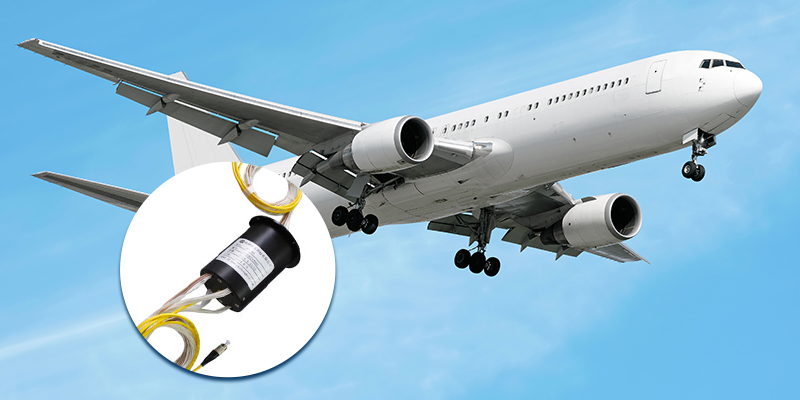
Automotive Industry
In the automotive industry, rotary unions are used extensively in production lines. For instance, they are used in painting robots that require precise movement while generating a continuous and consistent supply of paint. Pneumatic rotary unions enable unhindered rotation of the robot arm while securely transmitting the pressurized air needed to spray paint onto automobile bodies. Additionally, they are key to the successful operation of tire manufacturing machinery, allowing for tire curing and cooling processes without disruption of the gas flow.
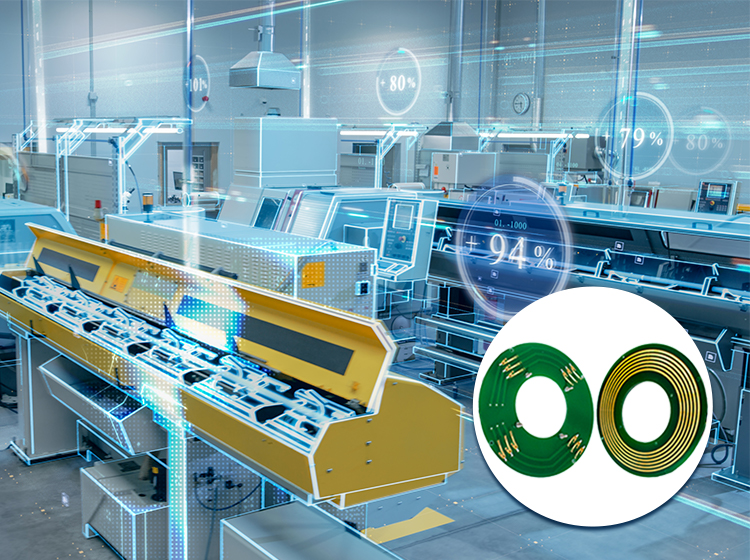
Manufacturing Industry
The manufacturing sector implements pneumatic rotary unions in a multitude of applications. In packaging machinery, rotary unions maintain a steady supply of pressurized air for pneumatic grippers used in pick-and-place applications. Similarly, in the textile industry, they are instrumental in spinning and weaving machines, ensuring a constant supply of compressed air that helps to control machine components.
Invariably, the seamless performance of pneumatic rotary unions allows for their widespread use across different industries. This utilization results in improved efficiency, increased productivity, and ensured reliability in various industrial processes.
Pneumatic Rotary Union Future Developments and Innovations
The field of pneumatic rotary unions is advancing at a rapid pace, with a myriad of innovations contributing to increased effectiveness across many industries. Significant progress has already been made in increasing reliability, efficiency, and adaptability, but the future promises even more advancements.
Recent Innovations
- Improved Seal Materials: Advancements in material science have introduced more durable and versatile seal materials. These seals increase overall efficiency, decrease maintenance requirements, and are more resilient to various gases and temperature ranges.
- Advanced Design Architecture: Innovations in design have led to more compact and lightweight rotary unions, enabling their integration into increasingly intricate systems or space-constrained areas.
- Integrated Sensors: More rotary unions now feature integrated sensors that monitor health parameters (e.g., temperature, pressure, vibration), providing advanced warning for potential issues, and facilitating timely preventative maintenance.
Future Developments
- AI and IoT: The use of Artificial Intelligence (AI) and the Internet of Things (IoT) in rotary unions is on the horizon. These technologies could enable predictive maintenance and enhance operational efficiency by integrating rotary unions into connected, smart systems.
- Sustainable and Efficiency-optimized Models: As industries move towards sustainability, the development of energy-efficient rotary unions that minimize gas leakage and optimize flow rates could be an expectation.
- Materials Advancement: Future advancements in materials could offer even better performance under high stress or extreme temperature conditions, expanding the potential applications of pneumatic rotary unions.
- Industry 4.0 Compliance: With the advent of the fourth industrial revolution, or Industry 4.0, there’ll likely be an increasing need for rotary unions that can seamlessly integrate with cyber-physical systems and contribute to fully automated smart factories.
The exploration and subsequent adoption of these innovations and future developments will no doubt further expand the applications and effectiveness of pneumatic rotary unions. As the technology continues to advance, the opportunities for implementing these mechanisms will likely extend beyond where we stand today. Even as we anticipate widespread changes, the core purpose will continue to be improving system performance, reliability, and life-cycle.
Conclusion
Pneumatic Rotary Unions hold a pivotal place in varied industries due to their essential functions. Proper selection, installation, and maintenance are keys to harnessing their full potential and ensuring longevity, promising an efficient and productive industrial future.
FAQs about Pneumatic Rotary Union
Navigating the vast subject of pneumatic rotary unions could present some confusion. Here are a few commonly asked questions to help clarify their crucial features and applications.
Q1. What is a Pneumatic Rotary Union?
A1. A pneumatic rotary union is a mechanical device that allows the transfer of gas from a stationary input to a rotating part. This function is crucial in many industries where continuous rotation is required while maintaining a steady flow of gas.
Q2. In what applications are Pneumatic Rotary Unions used?
A2. Pneumatic rotary unions are used in various applications across industries including aerospace, automotive, and manufacturing. They aid in tasks such as air clamping, air cooling, braking, and more.
Q3. What should I consider when choosing a Pneumatic Rotary Union?
A3. When selecting a pneumatic rotary union, it’s important to consider the pressure range, flow capacity, temperature range, compatibility with different gases, and application-specific factors. Proper consideration of these aspects will ensure optimal performance and longevity of the chosen unit.
Q4. How do I install a Pneumatic Rotary Union?
A4. Installation varies depending on the specific model. However, it generally involves preparing your equipment, cleaning the installation area, aligning components, and testing the union after installation. Consult your product’s user manual for specific instructions.
Q5. How do I maintain a Pneumatic Rotary Union?
A5. Regular inspections and proper lubrication are crucial in maintaining your pneumatic rotary union. Moreover, the replacement of worn-out seals and monitoring of noises and vibrations can help identify potential issues early.
Q6. Can Pneumatic Rotary Unions be used with multiple types of gases?
A6. Yes, as long as the seals and internal components of the rotary union are compatible with the specific gas. Always check with the manufacturer or consult the product’s technical specifications to ensure compatibility.
See What We Can Do

